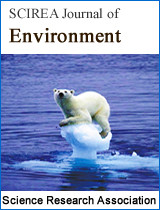Remote Monitoring and Mapping of the Shallow Seabed
DOI: 10.54647/environmental610391 47 Downloads 156947 Views
Author(s)
Abstract
Natural factors, technical means for remote monitoring and methodology for interpreting remote sensing images are discussed. Natural factors that determine the monitoring conditions include hydrometeorological regime, topography, soil, and thickets of submerged aquatic vegetation. Submarine topographical features, soils and associated seabed biocenoses form regular combinations that make the base of morphological landscape units (submarine landforms and facies). The latter, having specific physiognomic features, serve as the main target of photography in airborne and satellite images.
The technique for remote monitoring the shallow seabed involves the use of equipment installed on aircraft, unmanned airborne vehicles (UAVs) and satellites; shipborne ultrasonic (sonar) survey is a special type of monitoring.
The fundamentals of the methodology for using remote sensing images were developed on the basis of interpreting large-scale airborne photographs of the shallow seabed.
The landscape method of image interpretation is based on the use of regular relationships between components of environment: through the identification and characteristics of targets appearing in the images, a logical conclusion is made about the presence and properties of objects and phenomena that are not directly displayed in the images, but associated with them via natural connections. There are the laboratory stage, submarine studies, and extrapolation of interpreting features. Elementary airborne photographic standards are fragments from airborne photographs, which characterize images of seabed nature complexes (SNC) of key areas. Standards are used to extrapolate interpreting features to images of the same type. The inter-landscape extrapolation is performed by studying analogous landscapes and transferring the established interpreting features to unvisited water areas.
In conclusion, a programme of comprehensive landscape-bionomic studies is proposed. Remote monitoring and mapping of the shallow seabed based on the proposed programme will ensure uniformity of work and comparability of the results obtained.
Keywords
remote monitoring, sea shallow areas, natural factors, technical means, interpretation, landscape method.
Cite this paper
K.M. Petrov, A.S. Unagaev,
Remote Monitoring and Mapping of the Shallow Seabed
, SCIREA Journal of Environment.
Volume 8, Issue 1, February 2024 | PP. 1-24.
10.54647/environmental610391
References
| [ 1 ] | Gur'eva Z.I., Petrov K.M., Ramm N.S., Sharkov V.V. Geological and Geomorphological Study of Shallow Marine Areas and Coasts Based on Airborne Survey data. L., Nauka, 1968. 370 p. |
| [ 2 ] | Gur'eva Z.I., Petrov K.M., Sharkov V.V. Airborne Photographic Methods of Geological and Geomorphological Studies of the Inner Shelf and Sea Coasts. Atlas of Annotated Airborne Photographs. L.: Nedra; 1976. |
| [ 3 ] | Petrov, K.M. Marine Ecology: Ecosystems and Submarine Landscapes [Electronic resource]: textbook for bachelors / Petrov K. M. - Moscow: IPR Media, 2023. - 172 p. - ISBN 978-5-4497-1868-6 |
| [ 4 ] | Submarine Landscapes [Text]: Theory, Research Methods / K. M. Petrov; resp. ed. E.S. Korotkevich; USSR Academy of Sciences, Geographical Society. - Leningrad: Nauka: Leningrad branch, 1989. - 124 p. |
| [ 5 ] | Tkachenko K.S. Application of aerospace survey in hydrobiological studies. Proceedings of the Samara Scientific Center, Russian Academy of Sciences. 2012; 14(1):15-31. |
| [ 6 ] | Lepley LK, Adams WM. 1968. Reflectivity of electromagnetic waves at an air-water interface for pure and sea water. Honolulu (HI): Water Resources Research Center, University of Hawaii at Manoa. WRRC technical report, 25. |
| [ 7 ] | Kutser, Tiit & Hedley, John & Giardino, Claudia & Roelfsema, Chris & Brando, Vittorio. (2020). Remote sensing of shallow waters – A 50-year retrospective and future directions. Remote Sensing of Environment. 240. 111619. 10.1016/j.rse.2019.111619. |
| [ 8 ] | O'Neill, Jennifer & Costa, M. & Sharma, Tara. (2011). Remote Sensing of Shallow Coastal Benthic Substrates: In situ Spectra and Mapping of Eelgrass (Zostera marina) in the Gulf Islands National Park Reserve of Canada. Remote Sensing. 3. 975-1005. 10.3390/rs3050975. |
| [ 9 ] | Ventura, Daniele; Grosso, Luca; Pensa, Davide; Casoli, Edoardo; Mancini, Gianluca; Valente, Tommaso; et al. (2023): Coastal benthic habitat mapping and monitoring by integrating airborne and water surface low-cost drones. Frontiers. Collection. https://doi.org/10.3389/fmars.2022.1096594 |

